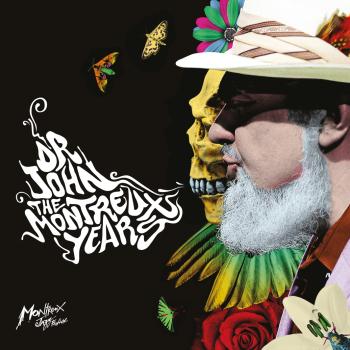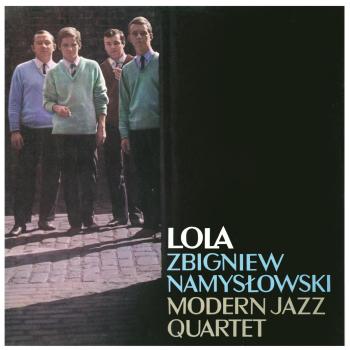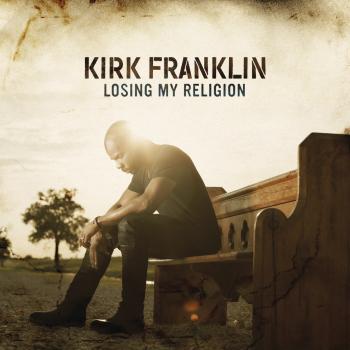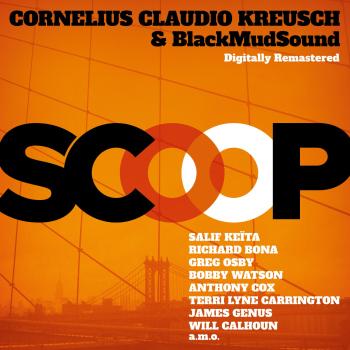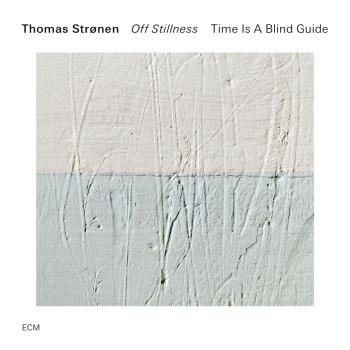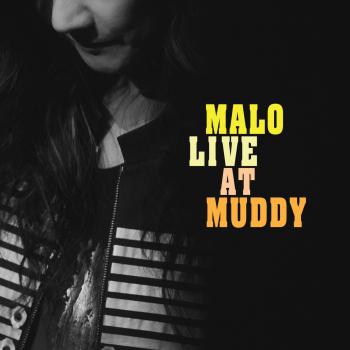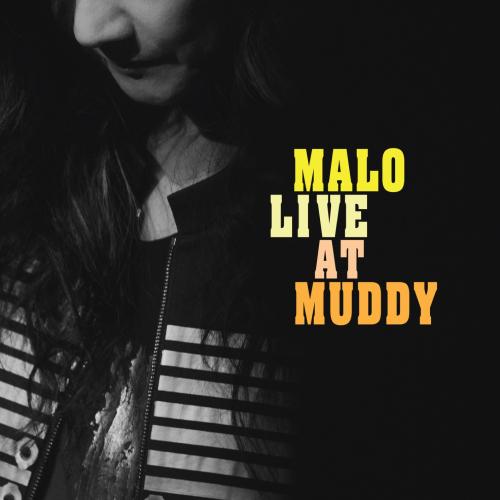
MALO LIVE AT MUDDY Malo
Album Info
Album Veröffentlichung:
2025
HRA-Veröffentlichung:
25.07.2025
Das Album enthält Albumcover
Entschuldigen Sie bitte!
Sehr geehrter HIGHRESAUDIO Besucher,
leider kann das Album zurzeit aufgrund von Länder- und Lizenzbeschränkungen nicht gekauft werden oder uns liegt der offizielle Veröffentlichungstermin für Ihr Land noch nicht vor. Wir aktualisieren unsere Veröffentlichungstermine ein- bis zweimal die Woche. Bitte schauen Sie ab und zu mal wieder rein.
Wir empfehlen Ihnen das Album auf Ihre Merkliste zu setzen.
Wir bedanken uns für Ihr Verständnis und Ihre Geduld.
Ihr, HIGHRESAUDIO
- 1 Sometime ago 07:20
- 2 Tight 04:17
- 3 Black Orpheus 05:52
- 4 A time to love, a time to cry (Florzinha) 07:34
- 5 Willow weep for me 07:09
- 6 Memoria e fado 05:40
- 7 Charade 07:26
- 8 Retrato em branco e preto 08:32
- 9 What a wonderful world 07:07
- 10 Somewhere in the hills (Favela) 06:11
- 11 Armando’s rhumba 07:11
- 12 No more blues 07:16
- 13 Cherry Blossoms Are Gone (Encore) 07:27
Info zu MALO LIVE AT MUDDY
Since the birth of the record in the early 20th century, producers of records have had one dream: to record live performances of musicians in front of a live audience, rather than recording in a controlled studio. This dream was able to reach its full realization in the late 1940s with the advent of the reel tape recording medium and the LP that could play those recordings.
Many types of music have been released as albums through live recordings, but jazz is the genre that has produced the most live albums. This is because jazz was performed routinely in clubs and new works were released in the process. Unlike other musics that released their works through studio recordings, jazz has always released new works through live performances. And these were delivered to a wider audience through recordings.
Therefore, while live recordings in other music are a 'special version' different from studio recordings, it is different in jazz. In jazz, live versions are often the actual originals. Duke Ellington's masterpiece 'Diminuendo & Crescendo in Blue' was recorded as early as 1937, but it gained its current fame thanks to the 15-minute long improvisation re-recorded on the 1956 Newport Jazz Festival live album. Bill Evans' famous song 'Waltz for Debby' was already recorded on his first studio album in 1956, but not many people remember that recording. This song was also imprinted in people's hearts through a 7-minute live recording at the Village Vanguard Club in 1961. The reason is clear. The charm of jazz lies above all in improvisation, and that improvisation naturally and passionately flows out through unspoken interaction with the audience.
As a jazz vocalist representing Korea, Malo, like many jazz musicians, must have yearned for a live album. Although he had already released several studio albums and received both love from the public and acclaim from critics, he may have thought that it was only half of him. I guess he thought that the actual appearance of the songs he sang in the club could not be properly captured in a studio album.
Because Malo's songs heard in live clubs are completely different from those in studio albums. He fearlessly uses scat, an improvisational singing technique, and expands it widely through musical ideas. He is one of the few jazz vocalists in Korea who can control and lead the audience not only in clubs but also on large festival stages. So I dare say that Malo's true nature lies in live stages. I have experienced that many times.
However, it is not easy to capture the charm of the live performance on the album. First of all, a band with solid teamwork that can always produce perfect harmony is the first prerequisite, and there must be a club where their sound can resonate beautifully. In addition, that sound must meet a great recording engineer. Only then can a live album be completed.
These difficult conditions were resolved one by one. The jazz club Muddy, which was preparing to open in Gunsan in May 2024, emerged as the best place to record Malo's live album, and the excellent sound engineers Hwang Byung-jun and Yoon Jeong-oh willingly participated in this project. And didn't Malo already have the best band 'Malo Band' that he had been with for a long time?
What we feel anew through this live album is the wide range of Marlowe's musicality. Starting with the songs of early jazz legend Sydney Bechet, and then Anne Ronnell, George David Weiss, Louise Bonfa, Henry Mancini, Antonio Carlos Jobim, Betty Carter, Chick Corea, and even Egberto Gismonti, Marlowe's songs, which he sings in his own style, completely digest this wide repertoire, partially convey his history of singing in clubs for countless nights.
Yes. The night of May 30-31, 2024, when this album was recorded at Muddy, is one of the many nights when Marlowe sang countless songs and the traces of them disappeared into the air. Just One of Those Things, to borrow Cole Porter’s lyrics. But somehow, those two nights were eventually sealed in the recording, and we can take out these songs whenever we want and play that ecstatic night. So whenever we hear the jazz masterpieces contained here somewhere else, we recall our memories and say, “Ah, those songs that Marlowe recorded at Club Muddy.” That night became a special night that created our ‘original version.’
Jazz Club Muddy: Muddy is Gunsan's first jazz club, opening in June 2025. Live recording took place on May 30 and 31, 2024, one year before the opening. In November 2019, Marlowe held a performance to celebrate the groundbreaking of the club at the demolished site of the building where Muddy will be located. Marlowe was also the first musician to perform on stage before the club's completion and opening.
Muddy was created as part of the 'Re\Turning' project for Gunsan urban regeneration. In 2019, people who love Gunsan gathered together and started the project with the big dream of making 'Gunsan that returns'. Muddy was designed as a space that preserves the original form of the wooden house built during the Japanese colonial period as much as possible and implements the best acoustic conditions. As a result, it became a very special jazz club that has been around for over 100 years.
The main character of this album is time. The album contains a one-time event that was thrown into the random moments of life and cannot be repeated. Band members Lee Myung-geon, Hwang Yi-hyeon, Jeong Yeong-jun, and Lee Do-heon gave a climax performance and made that time a gift. Having worked with Malo for over 10 years, they are now so connected in their musical souls that they can read each other perfectly just by looking at each other’s eyes. Their conversation was fuller than ever, and the audience responded enthusiastically without missing a single breath. Therefore, this album belongs to the musicians and also to the Gunsan audience. There was even an incident where a piano string snapped during the performance (the sound of that moment is hidden somewhere in the song ‘A time to love, a time to cry (Florzinha)’). No time in life can be perfect. This album is no different. It is the fate of live performance.
Live recording and album mastering were done by Hwang Byung-jun, the only Korean Grammy Award winner, and live sound supervision and album mixing were done by top engineer Yoon Jeong-oh. (Hwang Deok-ho, jazz columnist)
MALO
Malo (nee Soowol Cheong)
With both power and delicacy in her vocalization, Malo is one of the best jazz vocalists in Korea. Acclaimed as the most artistic, but also the most Korean-styled vocalist, Malo is the heroine who has promoted the status of jazz vocalists in Korea. She can freely sing the sounds she imagines, leaving musical limitations behind. It is a marvelous experience watching her sing breathtaking scat, for which she has been described as the “Queen of Scat” and the “Ella Fitzgerald of Korea.” Her performance was critically acclaimed by one journal as “phenomenally captivating with magical moments.”
Malo is also a versatile artist who performs every role including singing, composition, arrangement, and producing by herself. Malo has specifically focused on how to bring jazz into the Korean sentiment. Malo’s third, fourth, and sixth albums, which were written entirely in the Korean language, broke the common notion that the Korean language doesn’t fit jazz and was acknowledged to “have opened a new era of Korean jazz.” Especially, the third album ‘Cherry Blossoms Are Gone‘ was selected as one of the top 100 records in 2000’s by a webzine 100BEAT and a music portal Soribada.
With two project albums A Lonesome Camellia and Malo Sings Baeho, Malo proved the potential of Korean jazz standards, demonstrating how Korean traditional melodies can attain a modernistic mood when played in jazz. Malo keeps walking her unique path by exploring and seeking a way to bring together the universality of standard jazz with the particularity of Korean jazz into her music.
Malo came across jazz by chance. “When I was 22, I heard a saxophone tune playing in some coffee shop near my university [in Korea] and I couldn’t understand what they were doing,” she recalls.
It was love and intrigue at first earful. “I decided to find out what this ‘jazz’ music was all about. After I graduated from university, with a physics major, I flew to the States and enrolled at the Berklee College of Music [in Boston].”
Malo had grown up with a mixed musical bag. “My dad had an old song book that has hundreds songs of classic arias, world traditional songs, tunes of classic composers and black spiritual songs. I loved to sing those tunes, reading the scores and playing piano by myself. I sometimes also listened to classical, since my sister was studying classical composition.”
Naturally, Malo was drawn to vocalists. Her primary sources of inspiration were divas Dinah Washington and Ella Fitzgerald. “Ella showed me how to approach jazz singing with my mind,” notes Malo.
But the artist who drew her most strongly into the jazz idiom was iconic saxophonist John Coltrane. It was an inspired and natural choice, as he was one of the first jazz musicians to explore ethnic and cultural areas outside the Western world, including Buddhism, Hinduism, Kabbala and the teachings of Indian philosopher and spiritual leader Jiddu Krishnamurti.
Malo has gained renown for her jazz work in Korean, and the third and fourth of her five albums to date – Cherry Blossoms Are Gone and Now To You, released in 2003 and 2007, respectively – have Korean lyrics, with most of the numbers written by Malo. Despite her education at Berklee and her love for jazz, Malo does not try to come across as an American jazz singer. “I can’t be a ‘pure’ jazz singer because I have a different musical background and as a child I listened to Korean traditional music. They are influences that have remained with me all my life.”
In the last half century or so, jazz has increasingly taken on musical influences from around the world and Malo has followed suit, while taking the fundamental differences between English and Korean into account. “We have different structures and pronunciations of language. I’ve tried to put Korean words to my original melodies and to use Korean traditional rhythms. Recently, I’ve been working with old Korean pop songs, trying to bring them into the language of jazz.”
Dieses Album enthält kein Booklet

